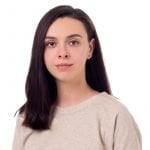The State of AI Overviews in 2024: Research Insights and Future Forecasts
Now that 2024 is finally coming to a close, it’s the perfect time to reflect on the transformations we’ve seen this year. For SEO, 2024 fundamentally reshaped how users interact with search results. This prompted the SE Ranking team to do extensive research and continuous learning. We conducted five comprehensive research studies where we analyzed AI Overviews (AIOs) from multiple angles. We also launched our robust AI Results Tracker to help SEO professionals monitor and analyze AIOs on their own.
We compiled everything we learned into a final 2024 report. This article looks at the current state of AI Overviews, compares it to our earlier findings, and reflects on what these changes could mean for SEO and the industry in 2025.
Let’s dive right into it!
-
The presence of AI Overview in US SERPs exceeded the peak recorded in early 2024 under the Search Labs experiment, reaching an 18.76% occurrence rate in November 2024.
-
Since mid-2024, the average text length of AI Overviews has almost doubled, from 2,633 characters in July to 5,337 characters in November.
-
The Relationships niche triggered AI Overviews the most in 2024, reaching a 54.84% trigger rate in November. It was followed by Business (38.84%), Food and Beverage (37.14%), and Technology (33.67%).
-
Sensitive YMYL topics like Legal (28.32%), Healthcare (17.09%), and Finance (10.08%) gained traction in AI Overviews, starting from August 2024.
-
Long-tail keywords consistently triggered AI Overviews, with queries of 4+ words resulting in AIOs 60.85% of the time in November.
-
Keywords with search volumes between 0 and 50 and low CPC values (below $0.50) continue to trigger AI Overviews.
-
The average number of links in AI Overviews is 6.82, while Career and Jobs (7.43 links), Fashion and Beauty (7.38 links), and Relationships (7.29 links) lead in average number of sources featured.
-
AIOs overwhelmingly favored large, authoritative domains like YouTube.com, Wikipedia.org, and Healthline.com.
-
In 92.36% of cases, AI Overviews link to at least one domain that ranks in the top 10.
-
In 61.90% of cases, AI Overviews source pages that rank in the organic top 100; in 63.19% of those cases the match occurs with the top 10 organic pages.
-
AI Overviews and featured snippets appear together in US SERPs 30.80% of the time. Link matches between individual featured snippets and one of the sources in AIOs occur 66.03% of the time.
-
The number of cases where ads appeared alongside AI Overviews fluctuated throughout the year, with the latest study showing a decline to 8.77%.
-
AI Overviews appear in UK SERPs 19.23% of the time, with AI-generated answers being quite long, at an average of 4,965 characters.
-
The Relationships niche leads in the UK with 50.50% of queries resulting in AI-generated answers, followed by Business (37.48%), Food and Beverage (37.06%), and Technology (32.32%).
-
93.78% of the time, UK AI Overviews link to at least one domain from the top 10.
-
In 64.94% of cases, links in UK AI Overviews lead to pages ranking in the top 100 in organic search, with most (64.32%) matching pages from the top 10 organic results.
-
The top linked websites in UK AI Overviews comprise mostly big international websites (YouTube.com, Wikipedia.org, Indeed.com). Local websites are also present (Gov.uk).
-
Featured snippets appear alongside AI Overviews in UK SERPs 39.39% of the time. Featured snippets link to the same sources as AIOs 60.39% of the time.
-
Ads accompany AI Overviews in UK SERPs in 34.30% of searches.
Disclaimer:
This research analyzes how AI Overviews evolved throughout 2024 to help you prepare your SEO strategies for 2025. Primary data collection for desktop searches was conducted automatically on November 19, 2024, for the US and November 12, 2024, for the UK. However, this research also includes data from previous studies conducted on January 30, June 3, July 11, and August 23.
Our interpretation of the results is just one of many other possible perspectives. Our results are specific to the keywords we sampled, the queries that triggered AI Overviews, and other research parameters. Related findings may vary under different search conditions or timeframes.
For more details, see the research methodology section at the end of this article.
General AI Overview trends in 2024
After an explosive 2023, when Google first introduced AI Overviews (formerly SGE) and began experimenting in Search Labs, the integration of generative AI into Google search kept its momentum going throughout 2024. We’ve seen:
- The official release of AI Overviews for US users in real search.
- Rising concerns about the reliability of AI-generated content.
- Google’s improvements to refine their algorithms and minimize misinformation.
- The first wave of AIO expansion to the UK and other countries.
- The grand expansion of AIOs to 100+ countries and languages.
We studied AIOs throughout the year, focusing on their frequency in search results, the types of keywords that triggered them, the niches they appeared in, and more. After observing all kinds of fluctuations, we are ready to share what we’ve found.
AI Overview frequency exceeds early 2024 peak
Our first AI Overviews (formerly SGE) study in February 2024 recorded 18,455 keywords triggering AI snippets (18.45% out of 100,013 keywords selected for the research). However, data collection at that time was limited to accounts participating in the Search Labs experiment. Following this, we observed a sharp decline in the frequency of AI Overviews, dropping to 8.71% in June and 7.47% in July. By August 2024, the percentage increased to 12.47%, and our latest data shows it has exceeded the initial level, reaching 18.76% (18,767 out of 100,013 keywords).

November 19, 2024
- 18.76% of searches
- 18,767 keywords
August 23, 2024
- 12.47% of searches
- 12,472 keywords
July 11, 2024
- 7.47% of searches
- 7,475 keywords
June 3, 2024 (Search Labs)
- 8.71% of searches
- 8,718 keywords
January 30, 2024 (Search Labs)
- 18.45% of searches
- 18,455 keywords
- 18.76% of searches
- 18,767 keywords
- 12.47% of searches
- 12,472 keywords
- 7.47% of searches
- 7,475 keywords
- 8.71% of searches
- 8,718 keywords
- 18.45% of searches
- 18,455 keywords
AI Overviews nearly doubled in length since mid-2024
The length of AI-generated responses fluctuated significantly throughout the year. We recorded the lowest average character count in July at 2,633 characters, while August peaked at 6,142 characters.

The latest data shows a moderate decrease to 5,337 characters, though its length remains pretty high.

Long-tail queries with low search volume and CPC trigger AI Overviews more frequently
All five studies conducted this year revealed a consistent trend: longer search queries were more likely to trigger AI snippets, with 4+ word queries resulting in 60.85% AIOs in November. While our latest study shows the highest percentage, this is mainly due to the increased number of AI Overviews recorded during data collection.

We also noticed that low-volume keywords are strong triggers for AIOs. Keywords with a search volume between 0 and 50 triggered AIOs most frequently across all analyses. This trend strengthened throughout the year, though the most recent data shows a slight decrease to 35.42% from its peak of 38.06%.
Keywords with lower CPC values demonstrated higher AIO trigger rates than higher-priced queries. On average, search terms with CPCs between $0 and $0.50 resulted in AIOs more than 50% of the time throughout the year.
The Relationships niche leads in AI Overviews while YMYL topics are gaining ground
Throughout the year, the Relationships niche remained the nearly undisputed leader in triggering AI Overviews, with the latest data showing its highest result—54.84% of AIO-triggering keywords.

The top five niches consistently included Food and Beverage, and Business, with Technology joining the leaders in June. In November, Self-Care and Wellness also made the list, with 29.58% of keywords triggering AIOs.

August marked a significant shift when the Legal niche saw its first major increase in keywords triggering AIOs, jumping from 0.64% to 22.30%. This led us to conduct a separate study focusing on AI Overviews for YMYL niches such as health, politics, finance, and legal. The analysis revealed that 50.33% of YMYL keywords (604 out of 1,200 queries) triggered AI Overviews. The Legal niche led with 77.67% of AIOs, followed by Health (65.33%), Finance (41.67%), and Politics (16.67%).

Our most recent data shows further growth in the Legal niche (28.32% of keywords triggered AIOs in November). Additionally, sensitive topics like Finance, Insurance, and Healthcare are gradually triggering AI snippets more frequently. This suggests Google is becoming more confident about presenting AI-generated content for these topics while also relying on disclaimers that encourage user discretion. However, Google remains conservative with News and Politics queries, generating few AI responses in these areas.
Throughout the year, the Career and Jobs niche consistently underperformed, joined at various points by Real Estate, Cars, Pets, News, and Politics. The most dramatic declines occurred in Ecommerce and Retail, and Fashion and Beauty. Although both were initially among the leaders, they dropped from 25.76% to 1.34% and from 25.28% to 0.84%, respectively.
An AI Overview analytics gap led to the emergence of new monitoring tools
AI Overview data isn’t tracked separately in Google Search Console. While impressions and clicks from AI Overviews are included in GSC data, they’re combined with all other metrics—similar to featured snippets—without a dedicated filter for AI-specific performance.
AIO impressions are counted in GSC if the link is scrolled or expanded. If someone clicks on your link from within the AI Overview, it is counted as a click. AIO snippets occupy a single position on the SERP, and all website links from within AIOs occupy the same position. AIO data from the Search Labs is not recorded in GSC.
This makes research studies valuable sources for general analysis and understanding AI Overview performance in search.
To offer more practical data, SEO tools began developing relevant solutions, and SE Ranking was one of the first to introduce comprehensive AI Overview tracking capabilities. First, we integrated AIO SERP feature tracking in our Rank Tracking tool. This allows our users to track which keywords trigger AIOs and whether their website is referenced among the sources.

We’ve expanded this functionality to our Competitor Analysis Tool and Keyword Research Tool. We also launched an AI Overviews Tracker that provides in-depth analysis of AI snippets for tracked keywords, monitors sources and competitors in AI Overviews, stores cached SERPs for future analysis, and offers additional advanced features.

Key insights into AI Overview growth and niche performance
After initial fluctuations, the number of AI Overviews has begun seeing growth since July and reached 18.76% in November. It has exceeded the results obtained during the first study. AIOs have also become longer, with over 5,000 characters.
AI Overviews are becoming more common in YMYL topics such as Legal, Health, and Finance. This shows Google’s increased confidence in AI’s capacity to handle sensitive subjects, especially now that it uses cautionary disclaimers to cushion against potential backlash.
Meanwhile, the sharp decline in AIO presence for Ecommerce and Fashion-related queries suggests that Google limits AI-generated content for transactional searches. Instead, it focuses on informational queries that demand comprehensive, authoritative responses.
The data reveals a clear preference for long-tail queries with lower search volumes and CPCs. This suggests that AI Overviews prioritize niche and intent-driven queries. It also suggests an opportunity for businesses to create more specific, detailed content when targeting these queries.
AI Overview sources and how they changed in 2024
Google has been experimenting with source layout in AI Overviews
Earlier this year, we observed source card carousels appearing on the right side of an AI snippet or under thematic blocks within the AI-generated response. We noticed later that side carousels were being replaced by cards under thematic blocks.


A significant milestone happened in mid-August when Google unveiled a redesigned right-hand link display for AI Overviews. This design is available both on desktop and mobile. To see sources on mobile, tap the icons on the upper right.
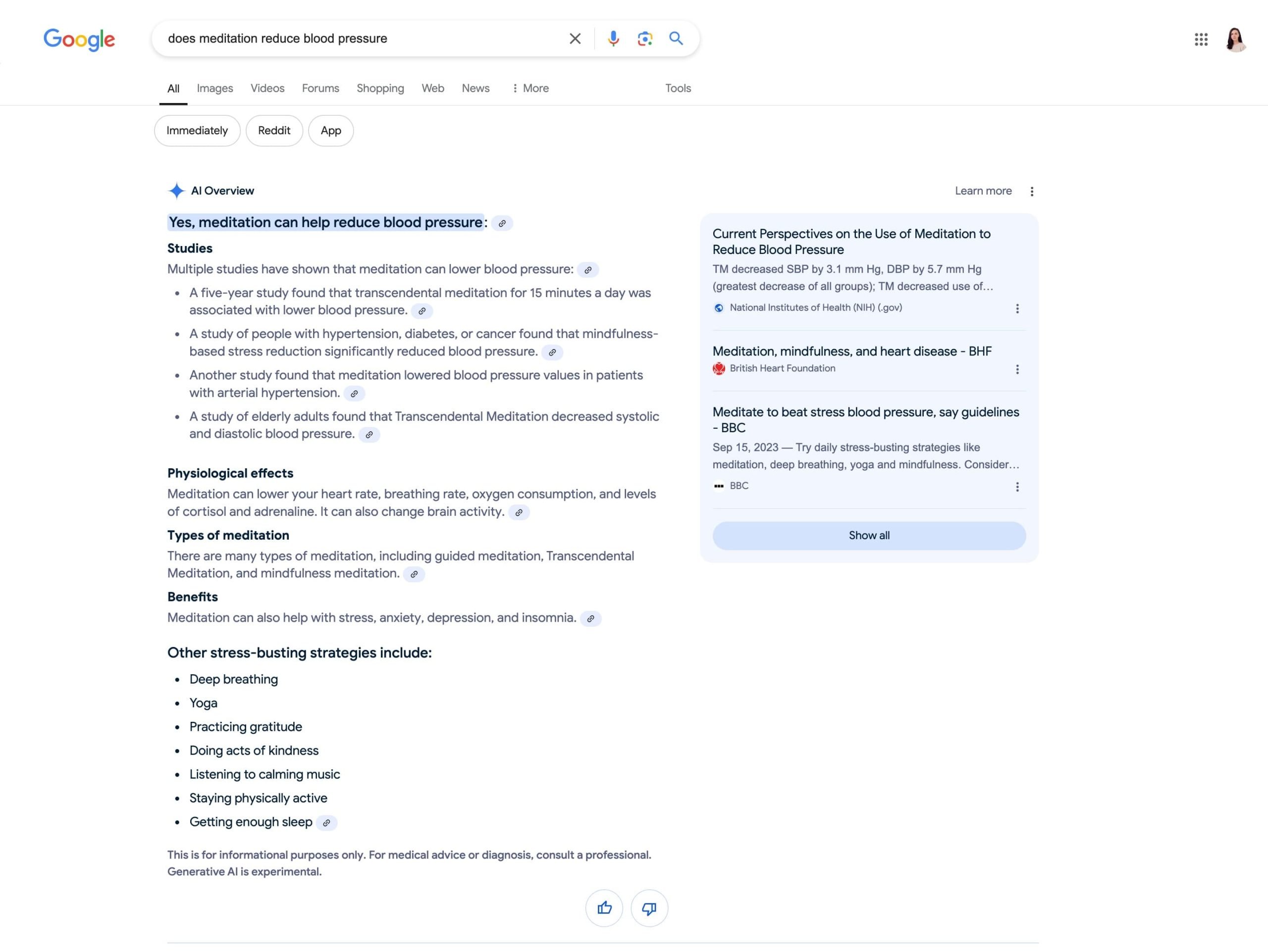

Clicking the link icon reveals the sources referring to the statement in the AI-generated text.
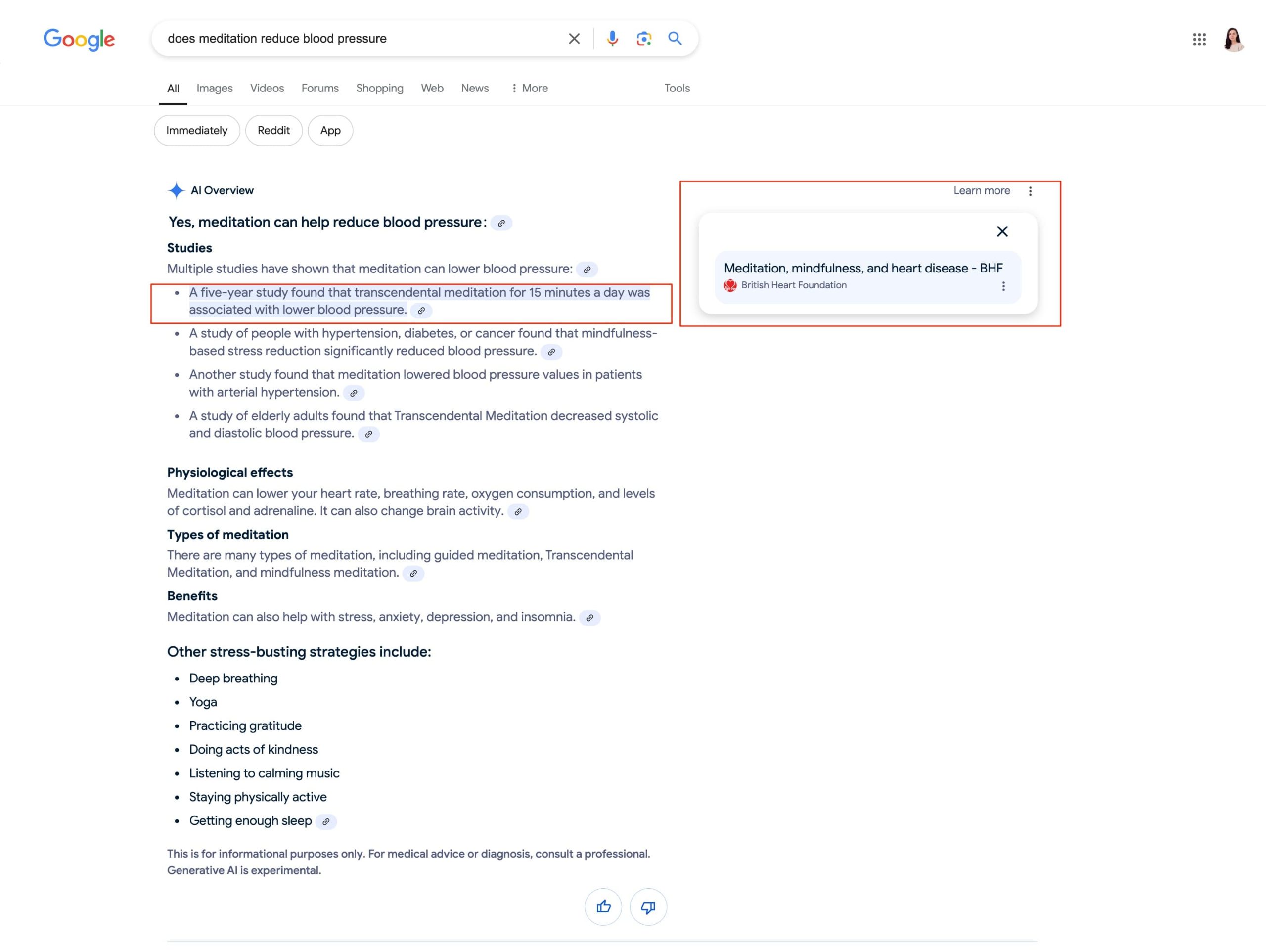
During this time, Google began testing direct link integration within overview text, and on October 3, 2024, Google globally rolled out in-text links within AI Overviews.

AI Overview link counts fluctuated throughout the year
Previously, we categorized AIO links as either visible before clicking the Show More button (pre-click links) or after (post-click links). Our July data showed that AIOs typically include 1 pre-click and 4 post-click links. However, with changes in the appearance of AI snippets, modifications to link layouts, and the introduction of in-text links with anchor text in AI-generated answers, we decided to revise our data collection model. Now, we calculate the average number of links in AIOs.
According to our data in November, AI Overviews have 6.82 links on average. The highest number of links per AIO observed is 25 links.
The top six niches with the highest average number of links in AI Overviews are:
- Career and Jobs: 7.43 links
- Fashion and Beauty: 7.38 links
- Relationships: 7.29 links
- Business: 7.26 links
- Travel, Education: 7.22 links

AI Overviews pull from big and authoritative domains and ignore Reddit and Quora
The sites linked in AI Overviews are constantly changing. We found in our research studies that the most frequently cited websites, based on niche results, are large and authoritative resources. Since July, the undisputed leader has been YouTube.com, which had 3,800 links in AIOs as of November.

Wikipedia.org was also among the top-linked sites throughout the year, dropping only to seventh place in July. Sites like Healthline.com and LinkedIn.com frequently appear in AI snippets, though LinkedIn was not in the top 5 during the last three studies.
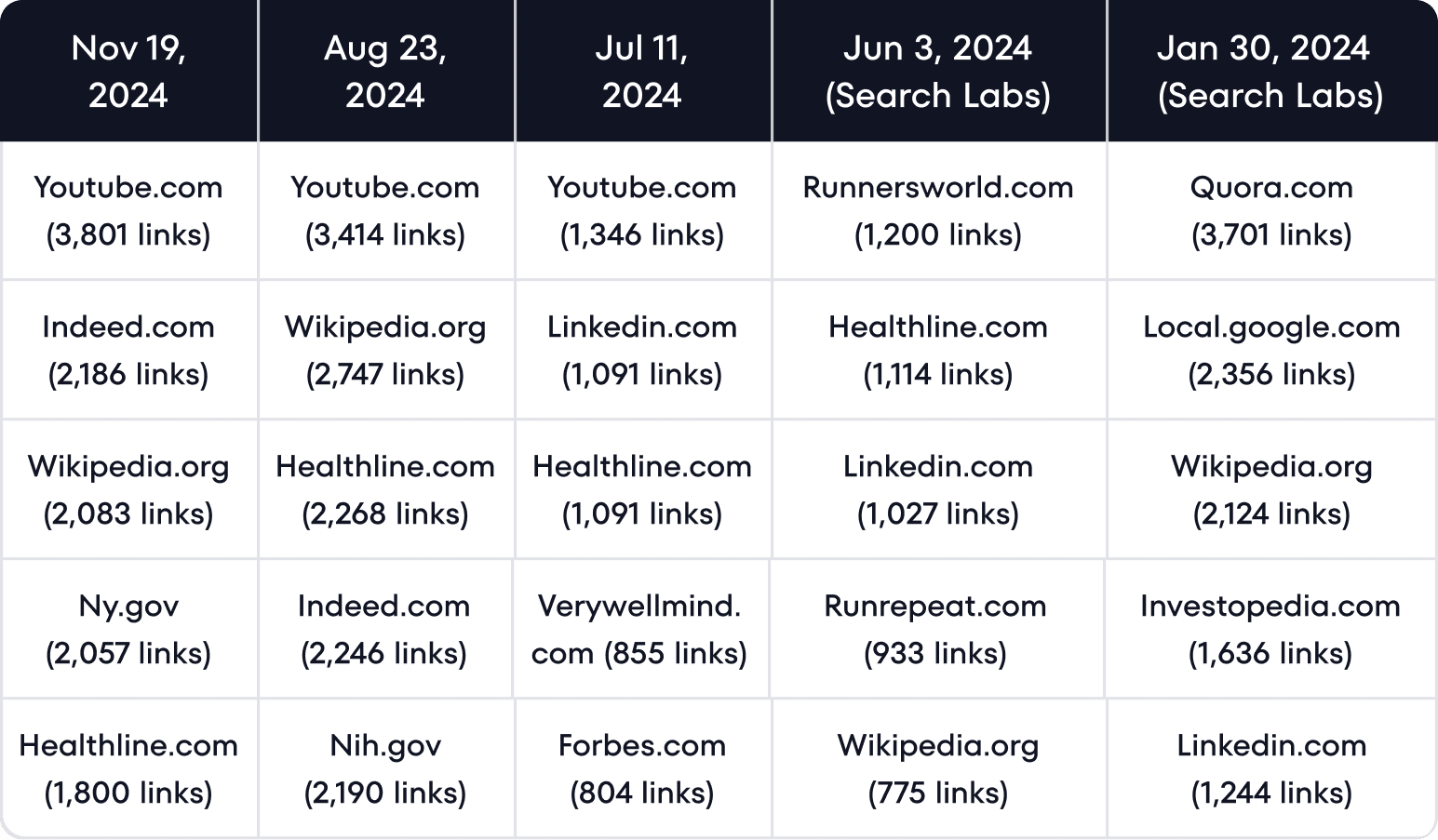
Websites like Quora and Reddit, which made it to the top 10 during our first analysis, are no longer featured in AI Overviews, even though Google uses content from Reddit to train its AI. During our latest research, we noticed a slight increase in links to these two websites but this was nothing compared to other domains.
November 19, 2024
121,260 links
August 23, 2024
116,314 links
July 11, 2024
51,745 links
June 3, 2024 (Search labs)
61,861 links
January 30, 2024 (Search labs)
127,344 links
November 19, 2024
1 link
August 23, 2024
0 links
July 11, 2024
0 links
June 3, 2024 (Search labs)
16 links
January 30, 2024 (Search labs)
1,173 links
November 19, 2024
3 links
August 23, 2024
0 links
July 11, 2024
0 links
June 3, 2024 (Search labs)
1 link
January 30, 2024 (Search labs)
3,701 links
121,260 links
116,314 links
51,745 links
61,861 links
127,344 links
1 link
0 links
0 links
16 links
1,173 links
3 links
0 links
0 links
1 link
3,701 links
AIOs typically link to large websites that rank for many keywords organically and have big backlink profiles. According to SE Ranking SEO platform data, the 20 top-linked websites have:
- 6.7K to 25.1M referring domains.
- 86.2K to 38.3B backlinks.
- 108.3K to 10.5B of traffic.
- 1.4M to 1.4B keywords.
Check out this file for our most recently updated list of the top 10 linked websites in each niche.
AI Overviews often link to pages and domains from the organic top 10
Our latest research shows that out of 18,767 keywords that triggered AIOs, 17,333 (92.36%) resulted in AI-generated responses linking to at least one domain ranking in the top 10. There have been dips in dynamics throughout the studies, but the trend remains stable.
November 19, 2024
18,767 keywords
August 23, 2024
12,472 keywords
July 11, 2024
7,475 keywords
June 3, 2024 (Search Labs)
8,718 keywords
January 30, 2024 (Search Labs)
18,455 keywords
November 19, 2024
17,333 keywords
August 23, 2024
11,719 keywords
July 11, 2024
7,002 keywords
June 3, 2024 (Search Labs)
7,386 keywords
January 30, 2024 (Search Labs)
15,786 keywords
November 19, 2024
92.36%
August 23, 2024
93.96%
July 11, 2024
93.67%
June 3, 2024 (Search Labs)
84.72%
January 30, 2024 (Search Labs)
85.53%
18,767 keywords
12,472 keywords
7,475 keywords
8,718 keywords
18,455 keywords
17,333 keywords
11,719 keywords
7,002 keywords
7,386 keywords
15,786 keywords
92.36%
93.96%
93.67%
84.72%
85.53%
During our research in November, we detected 127,985 links in AI Overviews, which is 2.5 times more than in July when we discovered 51,745 links in AI-generated answers.
Our latest data also shows that in 61.90% of cases (79,223 out of the 127,985 links), AI Overviews pull from pages that rank in the organic top 100 for the same keywords. Also, 63.19% of links go to the top 10 pages (50,062 out of 79,223). By comparing these numbers with our July data, we can see an increase in links matching the organic top 100 from 56.50% to 61.90% and a decrease in links matching the organic top 10 from 73.01% to 63.19%. Keep in mind, however, that these observations only relate to the total number of links identified in each study.


Below are the niches with the highest intersection of links between AI Overviews and the top 10 search results for the same query:
- Food and Beverage: 34.24% of niche links go to pages from the organic top 10
- Finance: 32.89% of niche links go to pages from the organic top 10
- Self-Care and Wellness: 31.25% of niche links go to pages from the organic top 10
- Education: 30.80% of niche links go to pages from the organic top 10
- Technology: 30.65% of niche links go to pages from the organic top 10

The following industries have the highest ratio of total links in AI Overviews to links leading to the top 100 organic search results:
- Food and Beverage: 52.42% of niche links go to the organic top 100
- Sports and Exercise: 49.56% of niche links go to the organic top 100
- Technology: 48.48% of niche links go to the organic top 100
- Relationships: 48.33% of niche links go to the organic top 100
- Education: 47.95% of niche links go to the organic top 100

We also noticed a link match between AI Overviews and featured snippets. When both appear in the SERP (30.80% of the time), the link in the featured snippet matches one of the links in the AIO 66.03% of the time. This gradual but stable increase began from 61.79% in June and continued into July at 63.63%.
Key insights into AI Overview sources
Early experimentation with source carousels and thematic blocks transitioned to a more consistent right-hand link display and, eventually, the introduction of in-text links in October 2024. This demonstrates Google’s efforts to make source information more prominent and accessible to users while adding more seamlessness to source attribution.
AI Overviews overwhelmingly favor large, authoritative domains with extensive organic visibility and robust backlink profiles. This trend suggests that to appear in AIOs, a site must establish itself as a trusted authority in its niche through high-quality content, strong backlink strategies, and broad organic keyword coverage. Emerging websites or those with niche appeal may struggle to gain visibility unless they focus on building authority and relevance in their fields.
The overlap between AIO links and organic results points to the continued relevance of organic SEO strategies. To be included in AI Overviews, high-ranking organic performance must be prioritized, as this is the primary gateway to earn visibility.
Google Ads and AI Overviews in 2024
Text and shopping ads made it to AI Overviews
Ads began accompanying AI Overviews as soon as AI-generated answers appeared in search results. These consisted mostly of traditional text ads at the top or bottom of the SERP (or other relevant places) and shopping ads (carousels of products).

In May 2024, Google started testing search and shopping ads inside AI Overviews for US users. The idea was to include ads for relevant queries, put them into a dedicated section with AIOs, and label them as “Sponsored”.
During our August research, we noticed several instances in which AI Overviews contained product cards with prices, store information, and other merchant data. They weren’t marked as ads by Google.

Starting on October 3, 2024, ads began appearing within AI Overviews for relevant queries in the US for mobile users. Ads like these, which appear inside AIOs, will be labeled as Sponsored, like promotions in search.
Ads continue to appear outside AI Overviews but less often across all niches
Since July 2024, we have seen a gradual increase in ads appearing on AIO-containing SERPs, from 9.47% of searches in July to 13.51% of searches in August. However, the latest study shows a decline to 8.77%.

November 19, 2024
- 18.06% of searches
- 18,767 keywords
August 23, 2024
- 12.47% of searches
- 12,472 keywords
July 11, 2024
- 7.47% of searches
- 7,475 keywords
June 3, 2024 (Search labs)
- 8.71% of searches
- 8,718 keywords
January 30, 2024 (Search labs)
- 18.55% of searches
- 18,455 keywords
November 19, 2024
- 8.77% of searches
- 1,646 keywords
August 23, 2024
- 13.51% of searches
- 1,685 keywords
July 11, 2024
- 9.47% of searches
- 708 keywords
June 3, 2024 (Search labs)
- 52.20% of searches
- 4,551 keywords
January 30, 2024 (Search labs)
- 47.72% of searches
- 8,807 keywords
- 18.06% of searches
- 18,767 keywords
- 12.47% of searches
- 12,472 keywords
- 7.47% of searches
- 7,475 keywords
- 8.71% of searches
- 8,718 keywords
- 18.55% of searches
- 18,455 keywords
- 8.77% of searches
- 1,646 keywords
- 13.51% of searches
- 1,685 keywords
- 9.47% of searches
- 708 keywords
- 52.20% of searches
- 4,551 keywords
- 47.72% of searches
- 8,807 keywords
Note: The table and chart above display how often ads appear in SERPs with AI Overviews. This includes instances where multiple ad types were present on a single SERP. We used a different calculation method in our earlier studies. This explains why the numbers in our current research may not match previously published data.
We see a similar decrease across most niches compared to August data. However, there are some exceptions. The following niches saw an increase in the number of times ads accompany AIOs. For example:
- Entertainment and Hobbies: 4.88% in August to 6.30% in November.
- Education: 11.41% in August to 18.46% in November
- Travel: 19.31% in August to 27.21% in November
- Career and Jobs: 2.38% in August to 10.44% in November
- Real Estate: 15.19% in August to 19.29% in November

Out of 1,646 instances where ads accompanied AI Overviews, we detected 1,228 cases (74.61%) in which only one ad type appeared with AIOs and 418 cases (25.39%) in which different ad type combinations appeared with AIOs.
- Text ads appeared at the top of the SERP 534 times (43.49%). Ads appeared above AIOs in all instances. This is a big increase compared to August’s data, where text ads appeared at the top of the SERP only 6.16% of the time.
- Shopping ads appeared 118 times (9.61%), with product carousels typically appearing below AIOs.
- Text ads appeared at the bottom of the SERP 576 times (46.91%).
The most widespread combination of ads appearing in a single SERP with AIO is text ads at the top and bottom of the results page. This is consistent with our August data.
Key insights into ads and AI Overviews
Google has reduced how many ads appear outside AI Overviews, dropping from 13.51% of searches in August to 8.77% in November. This decline could be partially attributed to the rollout of ads within AIOs. Google is strategically redistributing how and where ads appear. Another possible reason could be the antitrust lawsuit against Google, which pushes Google to reconsider its ad policy and possibly reduce the number of ads in search. The results may also depend on other factors, including time of day, day of the week, etc.
Niche-specific trends reveal growth in ads accompanying AIOs in sectors like Travel, Education, and Real Estate. However, Google’s decrease in ads across other niches could mean it intends to make ads more relevant and balance monetization without overwhelming users with excessive commercial content.
AI Overviews expansion and UK research results
Google expanded AI Overviews to more than 100 countries
On August 15, 2024, Google announced its expansion of AI Overviews to the UK, India, Japan, Indonesia, Mexico, and Brazil while presenting them in the local languages of each.
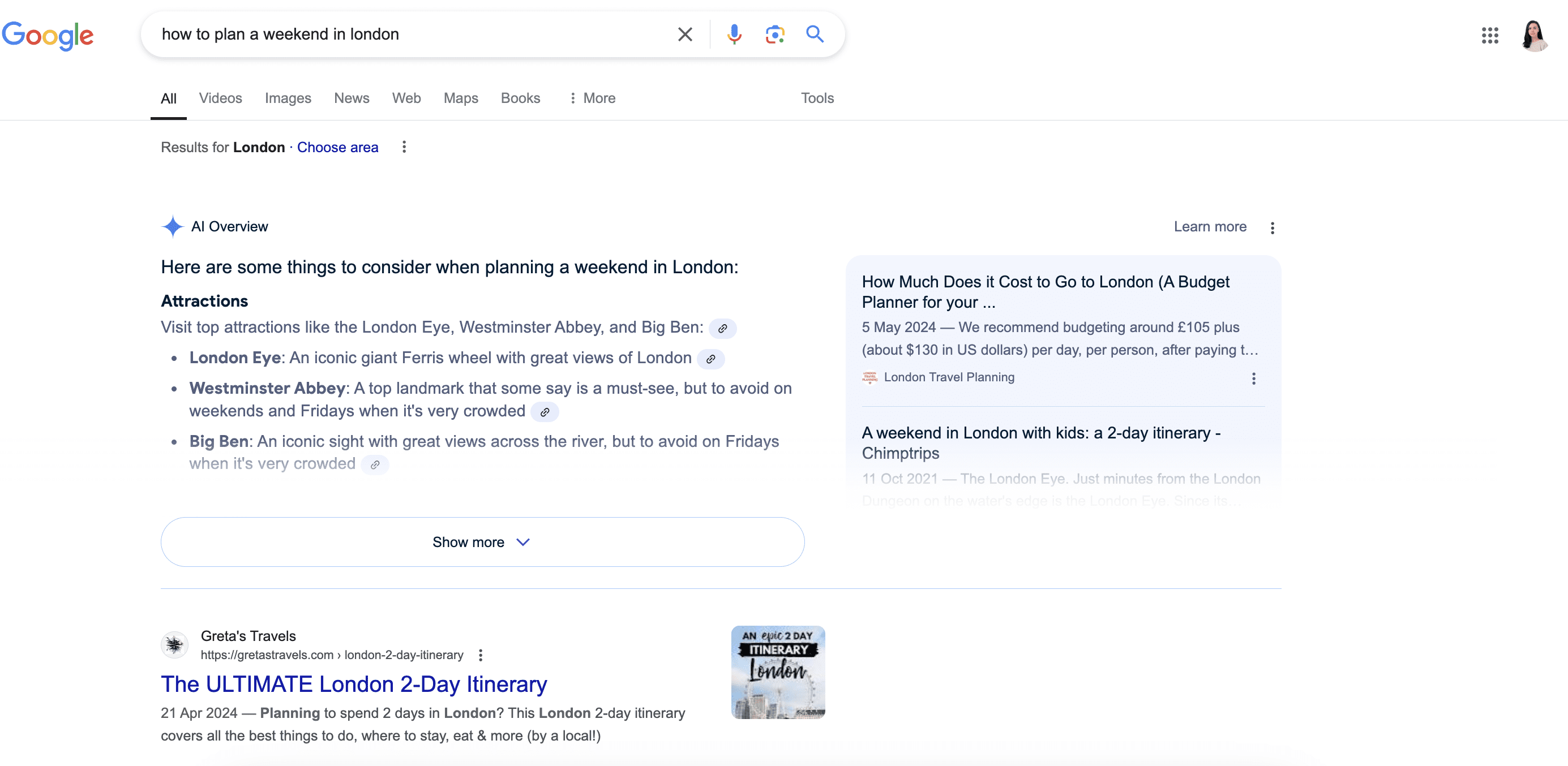
The end of October marked Google’s rollout of AI Overviews to more than 100 countries and territories around the globe. This helped Google reach 1B+ users globally every month. Google also extended language support to countries included. So if your country supports AI Overviews, you can get them in local languages (English, Hindi, Indonesian, Japanese, Portuguese, and Spanish).

AI Overviews in the UK are just as widespread as in the US
We followed Google’s lead and began researching AI Overviews in other countries. We chose the UK as our starting point for analysis.
When researching AI Overviews in the UK, we checked the same 100,013 keywords previously analyzed in the US location. The results show that AIOs appear in UK SERPs 19.23% of the time (19,236 keywords). There were no AI-generated answers in search results 78.63% of the time while technical errors occurred at a 2.13% rate.

As for niches triggering AI Overviews the most, what we see in the UK is similar to what we see in the US. The Relationships sector also leads here with 50.50% of queries resulting in AI-generated snippets in search, followed by:
- Business (37.48%)
- Food and Beverage (37.06%)
- Technology (32.32%)
- Sports and Exercise (32.28%)

The top underperforming niches in the UK are similar to those in the US:
- News and Politics (0.50%)
- Fashion and Beauty (0.78%)
- Ecommerce and Retail (1.40%)
- Career and Jobs (4.40%)
- Pets (5.85%)
The average length of texts in AI Overviews in the UK is 4,965 characters, making responses comprehensive and detailed. This is expected because long-tail keywords trigger AI Overviews the most in the UK. Queries like these are typically informational and require nuanced answers.
Keywords triggering AIOs in the UK have similar search volumes and CPCs to those in the US. Keywords with search volumes from 0 to 50 trigger AIOs 71.25% of the time, while those with CPC from $0 to $0.5 led to AIOs 71.42% of the time.
The average number of links in UK AIOs is 6.34. This is slightly less than the US results, but the gap isn’t that big and the general trend still holds.
In 93.78% of cases, links in AI Overviews match at least one domain ranking in the top 10 for the same query. Links in AIOs in the UK also lead to pages ranking in the top 100 organic searches for the same keyword 64.94% of the time. Most of these links (64.32%) match pages from the top 10 organic results.
The top five linked websites are primarily large international websites, with the exception of one local governmental website:
- YouTube.com: 2,911 links
- Wikipedia.org: 2,692 links
- Indeed.com: 2,221 links
- Healthline.com: 2,002 links
- Gov.uk: 1,964 links
Featured snippets accompany AI Overviews in UK searches 39.39% of the time (7,578 out of 19,236 keywords triggered both). When appearing together, featured snippets link to the same source as AIOs 60.39% of the time, among other links.
In the UK, ads accompany AI Overviews in 34.30% of searches. This is a significantly higher percentage compared to the US, where ads show up alongside AIOs in just 8.77% of searches. Our research also indicates 64.04% of cases when AIOs were accompanied by a single type of ad, while 35.96% included a mix of different ads following AI-generated answers.
The most common type of ad accompanying AIOs in the UK is text ads at the top of the SERP (50.70%). In our data sample, all top text ads appeared above AIOs. Ads appeared at the bottom of the SERP 38.98% of the time and shopping ads showed up in SERPs at a 10.32% occurrence rate. As in the US, the most widespread type of ad combination accompanying AI Overviews in the UK are text ads at the top and bottom of the SERP (93.17%).
Pets, Fashion and Beauty, Travel, Education, and Cars are the top niches. These have the most keywords triggering AI Overviews and ads in individual SERPs.

Key insights into AI Overviews in the UK
The massive expansion of AI Overviews demonstrates Google’s commitment to making AI-generated answers a standard, worldwide search feature. The initial data we pulled from the UK market shows similar patterns to the US in the number and type of keywords triggering AIOs, and niches with the most and least AI-generated responses. This suggests a consistent algorithmic approach across English-speaking markets.
The presence of local authoritative sources (such as gov.uk) in the UK’s top linked sites highlights the importance of regional context. Businesses targeting UK users should consider localizing content, building partnerships with authoritative regional sites, and optimizing for local search queries.
The outlook for AI in search in 2025
The SEO industry experienced significant transformations in 2024, many of which were driven by advancements in GenAI and evolving search engine algorithms:
- Google’s AI Overviews show its deep integration of generative AI into its search results.
- Microsoft’s Bing has also leaned into generative AI by integrating Copilot.
- Perplexity offers a different experience by providing an ad-free answer engine.
- OpenAI introduced SearchGPT and integrated this feature into ChatGPT, enabling real-time information retrieval within conversations.
And this is only the beginning. GenAI is here for good.
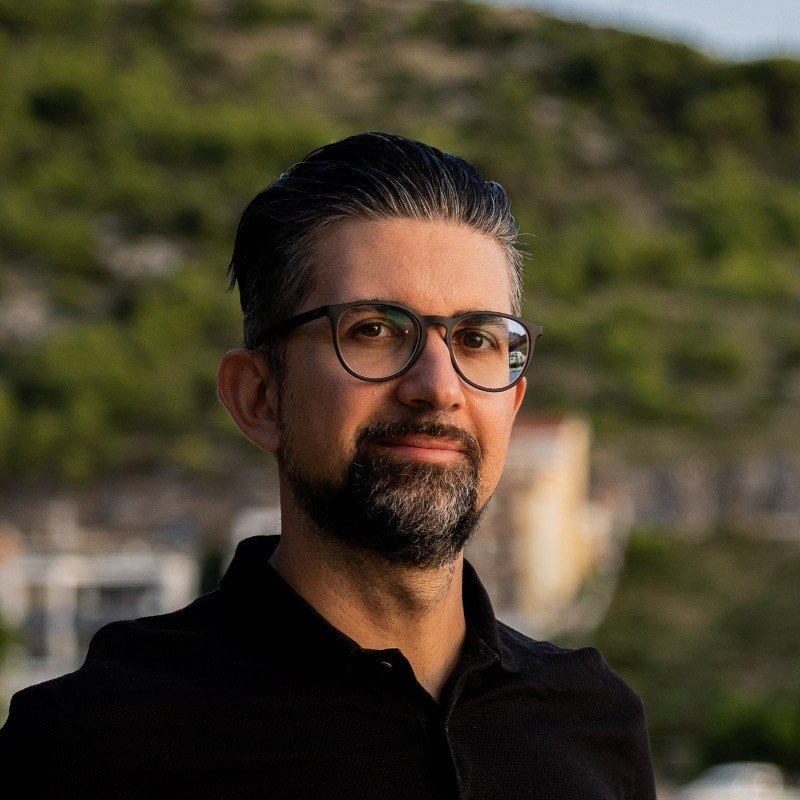
While the advancements in GenAI are exciting, they also present major challenges. Google is struggling with content quality issues, particularly related to AI hallucinations and misinformation. Furthermore, the rise of AI-generated content has led to what experts call an “internet slop” problem—where low-quality, AI-created content clogs up search results. There are also ethical and legal concerns, including issues around copyright and intellectual property
It’s hard to predict how things will pan out for the SEO industry and search in 2025, but here’s what our analysis points to.

- Search will become more conversational
AI will continue to shift user behavior toward natural language queries. Instead of keyword-driven searches, users will rely on conversational prompts, expecting AI systems to understand and respond contextually. Users will ask complex, multi-layered questions as if speaking with an intelligent assistant.
AI Overviews already appear in search results for voice queries, and users can get AI-generated responses when asking questions with their voices while using Google Lens to take a photo. That’s why incorporating voice search SEO into your optimization strategy is a smart move. Voice searches are often longer, more specific, and phrased as natural questions. To succeed, SEOs should focus on crafting content that uses conversational language, targets long-tail keywords, and answers common question phrases like “how,” “what,” or “why.”
- More traffic from alternative AI search engines and diversified optimization
2025 is likely to see an increase in traffic from other search engines like Perplexity, SearchGPT, and more (many have yet to emerge). This shift will require broader optimization strategies that consider these platforms’ unique algorithms and features. Businesses and SEO specialists will need to look beyond Google and apply multi-engine optimization approaches.
- Greater emphasis on experience and additional value for users
User experience will extend beyond technical aspects like site speed and mobile friendliness. The focus will shift to delivering positive, user-centered experiences. With AI delivering quick answers, you’ll need to find a way to streamline how visitors find information on your website. Moreover, you’ll need to offer unique value that AI can’t replicate. This includes sharing personal experiences, providing exclusive statistical data, interactive tools, etc.
- Zero-click searches will impact organic traffic and conversions
AI Overviews and other GenAI-powered features are reducing the need for users to click on individual links to find answers. This is good for user experience but not for brands, as it can lessen their share of organic traffic. With a growing number of zero-clock searches, brands will have to use different approaches to become more visible in search. They will even need to consider additional traffic channels beyond traditional SEO.
Additionally, brands will need to rethink their approach to the type of traffic they aim to attract. Top-of-the-funnel traffic may become less important as AI can quickly answer general queries. Instead, the focus might shift to bottom-of-the-funnel content that addresses specific questions and provides in-depth insights.
- Topical authority will become the new gold standard for content strategies
Search engines will increasingly prioritize websites and content creators who show a deep understanding of their subject area. This means going beyond traditional keyword optimization and creating interconnected, in-depth resources that explore topics from multiple angles.
- Optimizing for user intent will be more important
User intent optimization means truly understanding the motivations, context, and potential follow-up questions behind a search query. It involves mapping user journeys, anticipating informational needs at different stages, and creating content that addresses multiple levels of inquiry.
Research methodology
This study analyzes how AI Overviews evolved over the course of 2024. We aimed to explore changes in their frequency in search results, the keywords that triggered them, their sources, associated ads, and other key aspects. Our goal is to provide SEO specialists and website owners with actionable insights into AIO performance and expectations for the coming year.
We analyzed 100,013 keywords in total. Our sample included terms with different search intents, search volume values, and word counts.
We investigated 20 niches, reviewing approximately 5,000 search queries in each. The niches we observed include:
- Business
- Career and Jobs
- Cars
- Ecommerce and Retail
- Education
- Entertainment and Hobbies
- Fashion and Beauty
- Finance
- Food and Beverage
- Healthcare
- Insurance
- Legal
- News and Politics
- Pets
- Real Estate
- Relationships
- Self-Care and Wellness
- Sports and Exercise
- Technology
- Travel
For this analysis, we created projects for each niche within the SE Ranking platform and used its AI Overview tracking feature to capture AIOs in desktop searches. We focused on two countries:
- USA
- UK
We used the following parameters for the USA:
- Search Engine: Google
- Location: USA
- Region: New York, New York
- Language: English (en)
We used the following parameters for the UK:
- Search Engine: Google
- Location: UK
- Region: London
- Language: English (en)
We collected US data using Google Chrome on an Ubuntu PC without authorization. UK data was collected using Google Chrome on an Ubuntu PC through authorized Google accounts, with all personalization features disabled.
The primary data collection for this study occurred as a one-time check on November 19, 2024, for the US and November 12, 2024, for the UK. Additionally, our research includes data gathered during the following periods to provide a comprehensive view of AIO trends:
- January 30, 2024
- June 3, 2024
- July 11, 2024
- August 23, 2024
Wrapping Up
In this study, we’ve summarized the key AI Overview trends of 2024 and discussed what to expect from AI-generated answers and search in 2025. One thing is clear: the best strategy is to keep tracking AI Overviews to understand their impact on your site and identify areas for improvement.
Our AI Overviews Tracker is the perfect tool for this. It lets you monitor AI Overviews for your keywords, see which sources are linked in AIOs, discover new AIO-related keyword opportunities, analyze your competitors’ performance in AIOs, and much more. Start a free trial today to see how this tool can take your SEO results up a notch in 2025 and get ready for more research studies in the next year.
